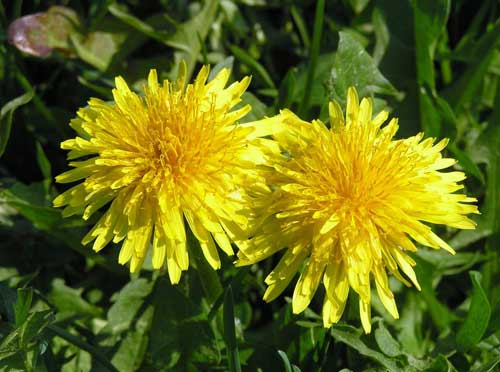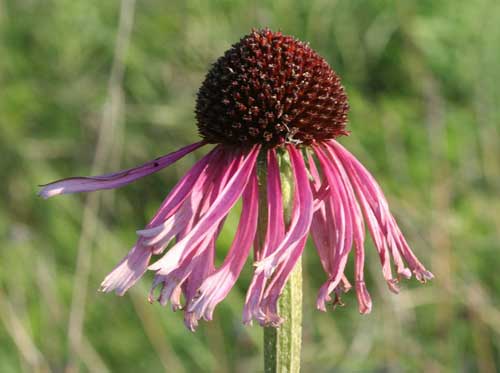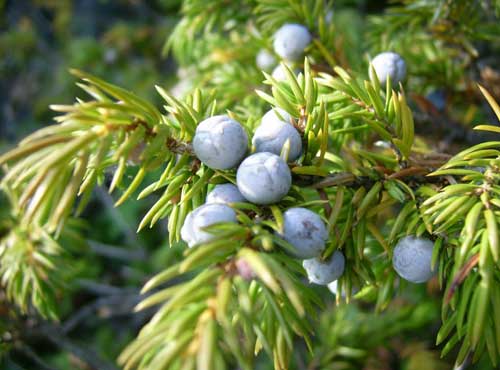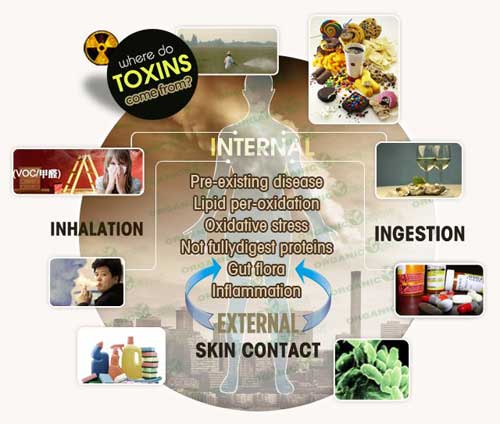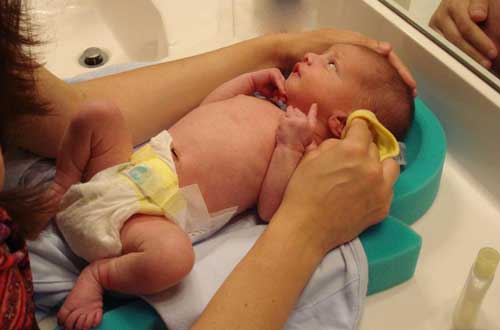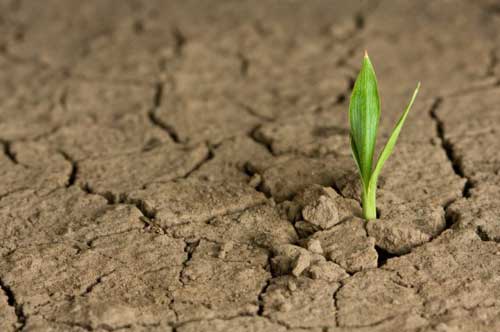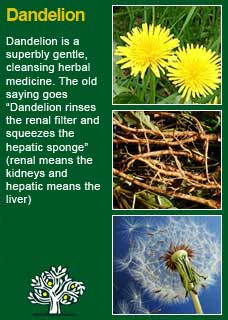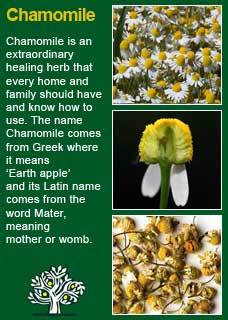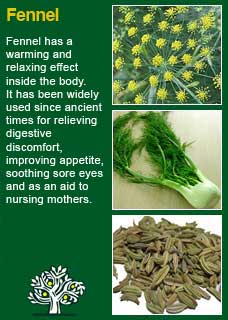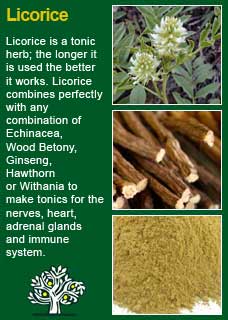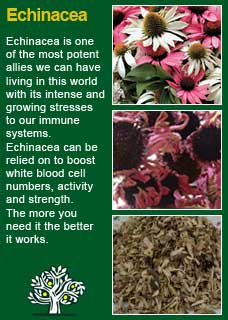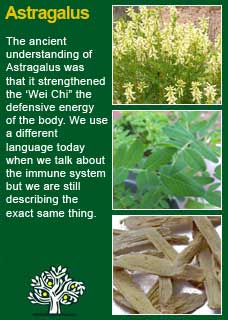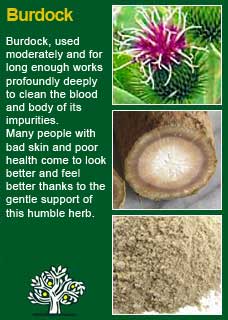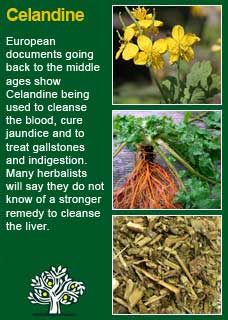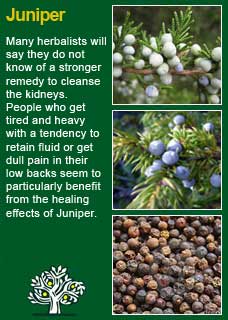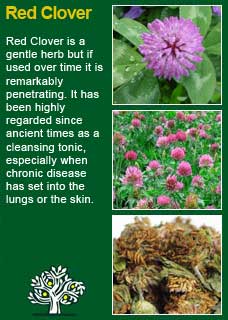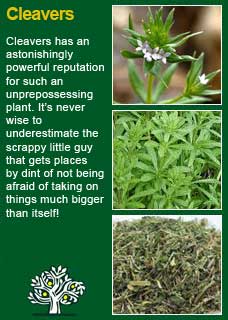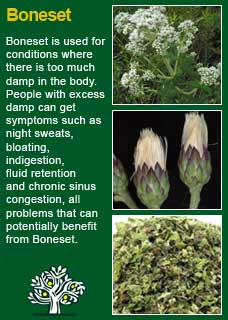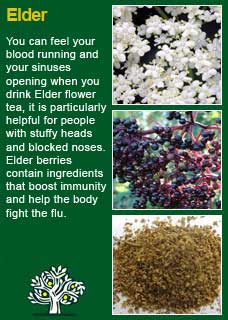
|
|
||
| Our Pages ABOUT CONSTITUTIONAL MEDICINE
|
Used wisely, a holistic approach can be exceptionally helpful for eczema even, as has been frequently seen, in very severe cases. Herbs have been humankind's only medicine for virtually our entire evolution so of course we found allies in the natural world to help us with the worst inflammations in our biggest organ - our skin. No-one should have any doubt that dermatitis in various forms has afflicted a great many of us since our collective journey began. We needed ways that could reliably help. I've been in full-time practice since 1989 and, like everywhere in the world, there are a great many people who are struggling with eczema in Christchurch, New Zealand, the city where I have worked all this time. I have worked extensively with many of those people and, whilst each case is different, there is also much common ground between people so there are some general suggestions given further on that may be of benefit to anyone. Firstly however, from the clinic files, I am sharing some case histories to illustrate some individual approaches to this complex condition. Usually, in these articles about the conditions I work with the most, I only choose two cases to share, but here I give notes on no less than 4 individuals. As you will see when you read on, eczema is a complex problem that can need very different approaches to its successful treatment.
I first met William when he was coming up to four-years old. He was a dear, sturdy little fellow, quite serious but with a quick smile too, wonderfully brave about being examined and then, later, when needing a blood test. I've picked his case as it was quite a recent one and also because it is so representative of many other children who've come in with eczema. As a baby, William was very 'colicky', he then started getting rashes around his face and neck at around 3-4 months old that had then spread to much of his body over the coming year. As nearly everyone does in our culture, his parents had started putting steroidal creams on his skin from early on and I acknowledge that it is entirely possible that without doing this his skin would have been much worse however, the downside, as I expect any seasoned eczema sufferer who is reading this will well know, is that his skin was abnormally thin and they had to use more and more of the steroidal creams and other suppressive products in the bath etc. to hold it back.. When I met William, his eczema was fairly well contained but was well set-in on the backs of his knees and elbows, some strong patches around his jaw, ears and mouth, and some small patches on his back and shoulders. Also, they were trying to get him to start attending a preschool but every time he went, within a few days he would get a bad cold that he would struggle to get over. They had stopped trying to take him by the time they came in for his appointment., feeling he had already suffered enough.
We make our own tinctures from organic dried herbs, so it might be important that you understand that the optimal dose range will vary with different preparations made by different companies or practitioners, The above liquid extracts were combined into a formula to make 210mls. This will easily fit into a 200ml amber pharm round bottle and is enough to last about 5 weeks if taken at the maximum safe and effective dose for a boy of Williams size and age of 3 mls twice a day. Dandelion & Burdock are two of the best herbs to help with all kinds of chronic skin conditions by helping the liver to clean the blood. Echinacea, Astragalus, Licorice root and Elder berry are some of the best of all herbs for the immune system. They can be read about in more detail in the Herbal A-Z found here
The GI tea is a combination of pleasant tasting herbs that help improve digestion. William was to be given the tea to drink quite freely with the expectation that he would soon get used to it and want to drink more of it, which is usually what happens. More about the recipe and instructions for the GI tea here The first step in healing is the one in which we let Nature in and allow these ancient allies, the herbs, to help us get well. The first step for William was simply to take the prescription as shown above. The next step is what I call the 'work'. It is what the patient does to help themselves. Underlying all the old ways of healing is an understanding that all living organisms have the innate ability to self-regulate and self-repair. The 'work' is usually about doing something that helps to remove the obstacles that are getting in the way of that natural, healing intelligence. William clearly had 'atopic dermatitis'. His eczema was primarily being driven by an allergic reaction to substances in his environment and, almost certainly, his diet. A useful way to think about allergy is that it is like a kind of bucket that, when fill to overflowing causes the itching, rashes and damage of eczema. This analogy helps to understand two key points: I explained to William's parents that, given how his 'bucket' had been overflowing for so long, we would likely get a lot of 'hits' if we did allergy testing with the blood analysis of the food detective kit right now, but, if we instead aimed for a low-allergy diet and environment and, at the same time, worked on building up his liver and immune health that if and when we still needed to put him through some testing it would be highly likely that he would be much less allergic with the positive consequence of there being much less restrictions on his diet or environment. This is a step 1, step 2 approach that I have found to be of much success in a great many cases. In fact, for many children, especially if you start young enough and the condition has not developed too far, you can avoid the need to do any complete restrictions or further testing, they just get completely better with the herbs and a low-allergy approach. The low-allergy approach recognises that dairy products, gluten, eggs, peanuts and tree nuts are the foods that, by far, come up the most in the diet of people with atopic eczema and, likewise, that animal dander, dust mite and mould spores are the issues that come up the most in the environment of people with atopic eczema. The advice is to keep those foods in moderate to low levels of consumption, not to avoid them altogether, because the hope is that, by improving liver and immune health, the bucket will empty enough that the child will learn to tolerate them, so all they need to do is to try to keep them in small proportions in the general diet. The environmental steps include keeping any pets that shed hair out of the child's bedroom at all times, making sure that there is no possible mould growing anywhere by doing a deep clean of the bedroom with bleach (yes I know that is not a very herbal prescription, but do not underestimate the power of fungal organisms to survive almost anything, except bleach!) and lastly to be aware of the possibility of dust-mite and the different ways to reduce it. There is more detail about dust mite and the overall subject of getting the bedroom clear of allergens in the general recommendations below. I asked William's parents to come back sooner if things were not going well but otherwise to do between 2 and 3 courses of the herbal treatment before coming back in for a review to see if we needed to go further or do anything different. They did everything as directed and I didn't see them again for nearly 4 months. On his second visit, William's skin was at least 80% better, there were still some small patches behind his knees and elbows but everything else had cleared up. Of great significance is that they had been able to completely stop using steroids for the last 2 months. Given he wasn't completely cured, I now recommended that they do the IgG food detective blood test to see if there were some lingering intolerances that it would pick up. It did show a mild level of reaction to both gluten and peanuts, so he was advised to avoid these completely for 3 months before gradually reintroducing them to see if he could establish tolerance. I will link this again in the general recommendations but, for anyone that wants to explore the subject of allergies and testing more thoroughly now, the detailed article on this subject is found here I am currently treating William's mother for something unrelated and have seen her recently. She told me that he has been at school for a year, has zero eczema, is getting over his colds in a day or two when he gets them, and is an altogether happy and healthy little boy.
I first met Emma when she was 32 years old. Like William, she also had atopic dermatitis, so there are many common features to these cases, but I want to share her experience to demonstrate how much deeper the work can need to go when the condition has gone on for so long. Like William, Emma had a history going all the way back into early infancy but in her case, she had also gone on to get multiple ear infections through her early primary years, multiple chest infections from about 8 or 9 years with then a diagnosis of asthma, and multiple urinary tract infections as an adult. Her skin was in a very bad way when we met. It was paper thin in places from the steroids that she had been using externally and internally for so long. She had eczema all over her body but was especially badly affected around her hands and face with all the terrible psychological stress this causes people. I have met and worked with many people like Emma over the years. They are often in heart-wrenchingly bad states by the time they are ready to leave the entirely tax-funded conventional system and try a different approach. I mention this because our treatments are, of course, entirely non-subsidised and, although we only put ethical mark-ups on our medicines, they can be costly, especially if we need to do a comprehensive course. This can create a real conundrum if a person has been too sick to work and so have any extra money for their health. In such a situation, rather than hold off on giving the strongest treatment I can, I usually ask if there is someone in their family they can ask for help with their costs. If there is someone they can ask, .as hard as it may be for their pride to make such a request, if they can bring themselves to do it, it can work very well. I also note that, so long as they have such a person that cares about them enough to financially assist their health journey, that there is a kind of healing in that support too. in Emma's case, as a a bright, intelligent, brave young woman, she had been working in well-paid and regular employment for many years and the question of costs did not come up. I always have a feeling of deep respect for the inner strength of a person who is so visibly marked by their condition to keep getting up and going out into the world every day; there is a lot of courage there. We used as strong a treatment as possible which included the following
This will make 560mls, which will just fit into a 500ml amber pharm round and will give 4 weeks, or 28 days, if taken at the maximum safe dose of 10mls, twice a day, which is what we used. Emma was a Bear constitution, naturally cooler and damper, more about that further below, and she especially needed help in the cleansing and nourishing phases of her cycle of healing, more about that later too. I mention those points here because it is important that to understand that the above is not a standard formula for an adult with severe eczema. In fact, there is no standard formula, albeit there are many common themes that reoccur. As a cooler constitution, it was necessary, especially whilst using some cleansing herbs that are typically quite 'cooling' that we used such warming herbs as Angelica and Ginger in the mixture, as well as the high doses of Turmeric described shortly.
Two capsules twice a day. St Mary's has some extraordinary liver-healing and protective properties. As with all our encapsulated herbs, we get organic concentrates, with one or more active ingredients standardised to a high level, and then send them to a local factory to be put into capsules.
Two capsules, twice a day. The concentrates of these herbs were to both nourish her blood and to support her immune system to be healthier and less reactive.
Four capsules, twice a day. These are a concentrate of Willow and an extract of Turmeric that is standardised to a very high (50%) level of curcuminoids. 8 capsules a day is a very high dose of these herbs and she was told she should halve the dose when things had significantly improved. The goal was for these herbs to help her body with its widespread inflammation and it was hoped that they could help her begin to replace the steroids that she had already been using for much too long. Emma's case was much too chronic, and severe, for even such a comprehensive program as the above to be enough by itself to effect the major changes that she needed. We also did a food-detective blood test at the end of the first appointment (it takes about an hour and we then call and email the patient the same day with the results) that showed her having strong reactions to a range of foods, especially gluten and dairy but also moderate reactions to corn, tree nuts, eggs, apples, and soy products. Her 'work' was to spend plenty of time thinking about and planning what she could eat, because as a full-time working person who did her own cooking etc. she needed to be very well organised to be on such a restricted diet for at least 3 months. Environmentally, she knew that animal fur set her off, so she didn't have any pets in her bedroom, plus her room was not carpeted so she was easily able to keep her rugs clean and relatively free of dust-mite. However, her living situation was in a fairly old house and her bedroom was not facing the sun for most of the day so another part of her 'work' was to go on a cleaning rampage, just in case there was any mould lurking unseen and sending out spores at night from some damp nooks or crannies in her room. Part of the reason I remembered Emma's case amongst others was that she had such a tough time of it in the beginning. Her progress was very slow in the first few months. I saw her once a month and by the 3rd visit, two months after we began, she was feeling very concerned that things weren't working much, the treatment costs were high, and her diet was obviously very difficult to sustain. In my early years of practice I might have panicked at the lack of response and been tempted to abandon the treatment plan at that stage but, from now long and hard-earned experience, I know that sometimes these things just take a lot longer than we want them to and that, for example, a 3rd month is always needed to truly assess the benefits of the dietary change. Emma was also already reporting that she was using considerably less steroids than before, so even though her skin was still very bad, she was needing to control it with less drugs. I counselled her to take that as a positive sign and to hang in there for another month. The fourth visit, 3 months after we began, Emma was all smiles as she came in to her appointment. She had hardly been using any steroids at all and, with visible joy, she showed me how much her skin had healed in the last month; new, healthy pink skin was growing out under the old, damaged and broken skin. Most importantly, she was no longer getting the great storms of itchiness and inflammation that used to send her into fits of scratching and subsequent skin damage. Everything was going great. From then on, there was no trouble in keeping things going for as long as needed. In fact, I only saw Emma for one more scheduled appointment though her notes show that she kept using her herbal treatment at gradually diminishing rates for quite a few months. I have seen Emma once further since that time, 2 years to the month after her last visit. She came in again with some concerns that her eczema might be coming back, and she wanted to have a general chat and a check-up before going back on to her old treatment plan. She said that she had been able to reintroduce dairy products, eggs, nuts and soy products but that corn, apples and gluten were still problematic, and she thought it was because she had been eating some foods containing wheat that her condition might have been returning, which made sense. We did a much-simplified treatment program at lower doses than before and agreed that a low allergy diet would be wise until things had settled down, which they must have as I haven't needed to see her again since then. There have been many cases like Emma's over the years. They've taught me that, as well as needing to be comprehensive in the treatment plan and to not hold back on using plenty of healing herbs and doing whatever we can to empty the allergy bucket, to always remember to be patient, even if it is slow progress at first.
I met Stuart when he was 56 years old and his skin was in a really terrible state. 6 years earlier, he had begun to get severe eczema on his hands and arms, it had then gradually spread over his chest and shoulders and then all up over his neck and lower face. He also had periods where it went down over his lower back and on to the backs of his legs. Stuart worked as a welder, he had been to two dermatologists (skin specialists) one who had told him that he had contact dermatitis from something he had been touching, the other said it was garden variety eczema. Both prescribed heavy doses of internal and external steroids which he said, 'did nothing for him' and that he thought they were 'just acting as moisturisers'. I wanted to include Stuart's case because he is one of a number of people I have met who most certainly do not fit the usual pattern of atopic dermatitis beginning in early life but rather show clear signs in their history of being exposed to some form of chemical stress that has then triggered a cascade of inflammation in their skin. I describe such people as experiencing 'toxic dermatitis'. It is something that is quite routinely seen when people react to drugs, for example, it is very common with antibiotics. Gardeners can get it when they use toxic chemicals on their plants, and people in any kind of in occupation where they are using products of chemicals that would be poisonous if they were ingested are vulnerable to it. An analysis of Stuart's history showed that he had started a new job using different materials several months before his skin began to break down. This, coupled with characteristic signs on his tongue and in his pulse, showed that his system was struggling with congestion and badly needed cleansing (anyone interested to learn more about the ancient art of tongue and pulse diagnosis can read here) In all the old ways of medicine, there is a kind of an assumption that any chronic skin problem will benefit from supporting the body to clean itself, especially by helping the liver to work more effectively. In a case of toxic dermatitis, as it appeared Stuart was suffering from, instead of focusing on immune health and an 'allergy bucket' we focused solely and strongly on helping a process of detoxification. Again, this is not a stock standard approach, Stuart was a 'Tiger' constitution, hotter and damper, which influenced the make-up of the following prescription.
To make 560mls and to last 4 weeks when taken 10mls twice a day. Note that the very potent Poke root at any dose will not suit everyone but was appropriate to Stuart's case.
Two capsules, twice a day. To support and protect the liver.
Between two to four tsps, one to two times daily, slurried into plenty of water and drunk quickly. Plantago has no unpleasant taste and is easy so long as it is done with speed! The wide range of dosage (between 2 and 8tsps a day) is for the person to experiment with the ideal amount to ensure a good clean-out from their bowel at least once a day.
To support the general action of the other herbs and to ensure that plenty of fluids were flushing through the kidneys on a daily basis. More about the recipe and instructions for this tea here The easy part of Stuart's work was to take the above medicines, keep his fluids up and to carefully follow the cleansing diet as written up here I say the 'easy' part because, although it' is quite a challenge for a person who has never done such a thing before to be on a cleansing diet, along with taking strong teas, extracts and a herb like Plantago husks, the much harder challenge for Stuart was about his work. I have learned to take a fairly hard line with people in such situations. If we really believe that something they are doing, in this case the particular type of welding he had been doing since before he got sick, is a root cause of the harm then we cannot in good conscience just keep doing that thing while we hope for the herbs to perform some kind of miracle. As it turned out, Stuart had long ago made the connection himself that he had started getting his troubles not long after he had started a new job, but because every doctor and specialist he had been to see had given it no importance he had just carried on. The first rules of medicine are 'do no harm' and 'treat the cause'. We would have been breaking both of these rules if he just carried on as usual at work and he had to stop the welding right away. I offered to write him a letter to give to his employee, but he said he would talk with him first. In New Zealand, and I hope this is true of many other countries, people have the right to choose their health care provider and a letter from me saying he should not be around welding materials as I considered them to be harming his health would have as much legal standing as something from a doctor from the conventional system. Fortunately, his employer was entirely sympathetic (it would be hard not to be given the state of the man's hands and neck) and was agreeable to him changing his job to another part of the business that had nothing to do with welding for as long as required. Earlier, I made a note of Stuart's comments about his steroids not doing anything. Even though I sent him the earlier version of this article that you can read below, with all my comments about steroids as you see them, he took it on himself to completely stop all steroids from the first day he came to see me. Unfortunately, as the cleansing process, at least at first, would have increased the amount of toxins circulating around his system, plus the inevitable 'steroidal rebound', when I saw Stuart 4 weeks later his skin was in an appalling state, right on the knife edge of blowing out into a major infection that would have needed him to be admitted to hospital. I urged him to use steroids, including internally, for a few days to let the fire settle down and then to very carefully go off them only as he was clearly getting improvements from everything else we were doing.
I want to also briefly recount something from a similar case to illustrate a point here. This was with a man who had medically diagnosed with blood lead poisoning from his job as a painter and decorator. His partner bought him to see me because his blood lead levels were still too high, and he just wasn't getting better from a host of neurological symptoms (dizziness, depression, altered vision etc.) We commenced with a cleansing program that was similar to the above one (especially because he too was a Tiger) and, about two weeks later, when he went in for his routine monthly blood to check his lead levels, the alarm button was pushed because they had gone through the roof and he was sent straight to hospital! He was admitted into the acute observation ward where a group of doctors assessed him for a day, including asking him what he had been doing differently. The only really new thing was the herbal medicines, so his Doctors told him that they thought it must be that the herbal medicines had been contaminated with lead! Hence his partner had to bring in his herbs for them to get tested. The herbs were, of course, completely fine. Most of our herbs are certified organic and we go to a great deal of trouble to ensure that we get the very best of raw ingredients. What had happened is that the herbs had stimulated his liver, kidneys etc, and the lead and other toxins that he had been holding on were being liberated into his blood in order for it to be processed and eliminated. The man did soon afterwards begin making excellent progress and is now fully well but this was a fascinating example of how the cleansing process can, in a very literal sense, make things worse before they get better.
I know 'nervous dermatitis' sounds bad but it is baldly descriptive for something that must be met head on if there is to be any hope of a cure and there are clearly many people for whom it is clearly stress that is the first and foremost driver for their eczema. Veronica was a cogent example of this. I first met her when she was in her late 30s. Her body was very badly affected by eczema despite that she had been taking the maximum amount of drugs, creams etc. to hold it back for a very long time. She was, unfortunately, really too unwell to be out in the world doing any kind of work and this was an example where family support was already in place for her to come in to begin with. Veronica was an Eagle constitution, meaning she was both hotter and dryer. As it happens, at least from my observation, Eagles are the most common of all the constitutions to be affected by atopic eczema, closely followed by Bears. They often have hypervigilant immune systems and can become very reactive to foods and environmental factors from a young age. There was a little bit of that atopic picture in Veronica's early history, so the stage was set, so to speak, but it was a relatively mild level of eczema that she had completely grown out of by the time she was at primary school. The fact that there was no recurrence of it whatsoever through all the years of her schooling and for the first few years of her adult life, meant that whatever had happened when it came back in so badly was likely going to be very important. On careful questioning about this, by going back into the history and asking her to try to remember everything that happened before or around the time she got sick, Veronica became visibly distressed and embarrassed. She was saying 'I don't know, I don't know' but her body language was showing another kind of response. Her mother, who I later realised was paying for her treatment and had come in to support her, was obviously very worried about her daughter and was trying to help me to help her to answer the questions and to go back to that part of her life (which was in her mid-20s) but I got one of those intuitive hunches that had me ask the mum to step outside for a few moments so I could talk with her daughter privately. When we were alone, and I had reassured her about the utmost bonds of confidentiality that I was sworn to uphold, that she could tell me anything and that it would never go anywhere further without her permission, she began to open up. She had been in a relationship with a man that everyone, including her own family, thought was a great catch, a smooth talker, successful, handsome and a part of their wider community. Veronica came from a religious family and community that strongly believed in marriage before sex and, at least at first, as this man was also part of their church, he had held back from making any demands on her until one fateful night, when they went away for a weekend holiday, promising to have separate rooms, but he came into her room and forced himself upon her, not just once but repeatedly over the weekend. She felt unable to escape, she hated it but was utterly terrified of him leaving her if she said anything and just kind of withdrew into herself into what she described as a kind of detached state, as if it was happening to someone else. It would have been more than enough damage to her that she was a virgin and had effectively been raped by her boyfriend, but it later turned out that she became pregnant from what had happened over the weekend. He had already gone cold towards her after the weekend, then when she told him what had happened, he convinced her to not let anyone in the family or church know about it and to get an abortion. Apparently, the unsaid threat was that they would both be outed from the community if any of it came to light, so he convinced her to keep it all secret. So then began the itching. I could see that the hurt, the anger, and the shame were like a fire within her. These are powerful emotions that can literally make people feel like they are burning up inside and, if they don't have any way to release them, can do them terrible harm. All this story came out in a rush and it was obviously an enormous relief for her to finally tell someone what had happened nearly 15 years ago that had so broken her internally. Later, it would be important for her to share what had happened with others, starting with her mother, but these things have to take their own time, and at first I simply reassured her that no harm would come to her from sharing her story and that it simply meant that we had to treat her as a whole person to get better; both mind and body. both spirit and flesh. Anyone who works closely with herbs will develop an appreciation for their ability to have a profound effect on people's mental health and wellbeing. Certain herbs are renowned for helping with great mental stress and can be safely used to help unwind the terrible 'spring' of nervous tension that had wound up in someone like Veronica
To make 560mls for a 28-day course when taken at 10mls twice a day. It didn't matter when she took them exactly, but it was very important that whenever she did take the herbs that she would do some form of relaxation afterwards
To drink freely, at least one cup a day but more if she wanted, recipe and instructions here Given that Veronica did have signs of atopic dermatitis in her early childhood, there was every reason that we might gainfully have addressed her diet and environment for allergies, as well as sought to improve immune and liver health with herbs. However, when someone is so clearly blocked in the relaxation phase of their cycle of healing (discussed further shortly) it can be seen that such steps may be of little benefit and can in fact dilute and distract from the main area issue blocking the healing process. You have to start wherever the system is most out of balance to get the healing journey underway. Veronica was very open to understanding this and it made intuitive sense to her that her skin had been and was being deeply affected by her internal emotional state. The herbs would help, and it was equally vital that we began a practice from day-one that would help her to open up to their effects and to help herself to relax with them. To that end I taught her the 7-11 breathing technique that is shown in the article on anxiety here and we set in motion a plan to help her to heal her mind as much as her body. This plan, and its execution, was a complex process, I won't spell out all the steps here for there has already been a lot of detail in these case histories, but it was a lot about finding ways to direct her mind in more positive directions, to study and learn new things, to read books, to start to express herself in art. I do want to mention that some restorative justice was an essential part of her healing journey. Given the events of the weekend, the time frame involved, and that they had gone away together and were in what could be argued was a consensual relationship, the grounds for a criminal prosecution of rape were too thin (I have a patient who is a detective in the sexual crimes department who is very welcoming of me calling to ask about these things when they come up) However, the truth is still the truth and it was very important that she talked about what had happened with key people in her community, especially her pastor who agreed with my view that not only should she tell her family but that she should write a letter to the man that clearly explained what had happened to her and how it affected her for all these years. There was a correspondence that occurred between them, and I was told that there was a deeply sincere apology in person from the man that happened in front of several pastors of their church. I am sure you can imagine how challenging it was for her to go through all this all these years later, but despite all the turmoil, it was worth every part of it because in the great release of hurt and shame that she experienced was a large part of the reason she eventually healed. This was over a decade ago now. We are still in touch on rare occasions and I am delighted to report that not only did her skin heal, but she went out into the world, got a job, found a man who shared her faith and became a mother of a young girl of her own. People can heal from just about anything if we work with nature and treat the cause of what's wrong.
I've mentioned above a few times about constitutions. This ancient way of understanding our differences, according to how we are naturally either hotter or cooler, and at the same time dryer or damper, underpins much of the approach to what kinds of foods, herbs etc, will best help a person. Anyone, from any of the constitutions, can get eczema. If you, or someone you care for, are having troubles in this area, you can learn more about the general subject of the constitutions starting here, and then work out which constitution you or they are by going here
After getting a sense of whether a person is naturally cooler or hotter, dryer or damper, the next level of knowledge to take the kind of personal approach that can be essential to a great result is to look into the healing cycle. This is a fascinating subject in itself and understanding it can give great insight into what needs to be done to treat the cause and help healing happen naturally. There are four stages in the cycle; cleansing, activation, nourishment and rest. However, before I put the link for anyone who wants to learn more, I want to say that I fully recognise that many people are not ready to take the kinds of steps you see being talked about in the case histories above, or in the general recommendations below. They would rather use drugs and steroids and get on with their lives with as little disturbance to their habits as possible. Yes, probably, if there are underlying issues that aren't being dealt with, there will be further trouble to come, but none of us are getting out of this alive no matter what we do, and I deeply believe that people should choose their own paths as much as they possibly can. That said, people can get better from just about anything if they let Nature in and work on the cause of their problems; to learn more about the cycle of healing read here
I trust that you will understand that the holistic treatment of eczema requires an individualised approach that works alongside the person wherever they are at and, as mentioned at the beginning, if your condition is very bad or you know you need some guidance in person, then I hope you will be able to find a good herbalist who will get involved and guide you to getting and doing whatever you need to get well. However, it also may be that the condition is not so severe, or even that it is but you just don't have the option of working with a holistic practitioner. In these instances, it is my hope that the following will be of much practical benefit to you. These are the chapter heading again if it will help you to go the areas that most relate to you personally: Atopic Dermatitis - Eczema primarily from internal allergies Contact Dermatitis - Eczema primarily from external allergies Toxic Dermatitis - Eczema primarily from bad blood Nervous Dermatitis - Eczema primarily from stress Skin Infections & Skin Care
People who have atopic dermatitis, or eczema that is primarily from internal allergies, usually show a pattern of the problem starting in early childhood, often very early, and the skin rashes follow a physical pattern of being most prevalent behind the knees &/or elbows and then tending to spread from there. Allergies play a huge role in many cases of eczema. If the problem does not appear to be caused by other factors, such as an acute exposure to toxins, or a period of intense stress, then it can probably be assumed that allergies are a leading cause. There is an abundance of statistical evidence to support this assumption:
In this instance, the first priority is to determine whether the allergies are primarily internal, i.e. from the diet, or external, i.e. from the environment, often it is a combination of both. As I talked about in the case of Emma, the analogy of an 'allergy bucket' is a useful one because there is always more than one thing filling that bucket. A genetic (constitutional) disposition puts the bucket there in the first place but what fills it to the point of overflowing, i.e. inflammation, is usually a combination of such things as pollens, pollution, dust-mites and foods. You probably can't remove everything that fills the allergy bucket, but if you can empty it enough that it stops overflowing, then you can stop the cycle of inflammation and the skin can finally start to heal.
The liver is the hottest organ in the body, plus it has to learn to deal with an enormous number of different substances in the early months of life. Even if genetics set the stage, it can only be when the liver begins to struggle and 'overheat' that allergies to foods and other substances begin. In such cases, it can be of great benefit to give very small dose of safe but potent liver and gut herbs directly to the baby or infant. If this is the right approach then things usually start to improve quite rapidly, at least within a few weeks, often within days. There are no fixed formulas, they vary according to each patient, the following is a typical mixture given here by way of an example:
Click on the herb's name to learn much more about it. Dandelion root is both safe and effective and is, in my view, the key liver herb for babies and infants. The other herbs in this mixture are to soothe the irritated & inflamed digestive tract that will be present with allergies and when the liver is under stress.
Dosage is vital for the success of all herbal medicines and here we run into an immediate practical difficulty because herbal extracts come in different strengths and these suggestions are based on the tinctures we make ourselves from raw material. Nevertheless, by way of example, we would typically give about 1 drop per month of a baby's age two to three times a day for as long as needed to turn things around or at least two or three weeks to assess whether it was clearly helping. In other words, a 3-month-old would get 3 drops each dose, a 6-month-old 6 drops and so on. You can help a baby through the mother's milk in other ways, but I do not think it is effective to use liver herbs for a baby via giving larger doses to a breastfeeding mother. Very young children are remarkably adaptable to the taste of the herbs and it is rarely an issue to get regular and repeated doses into them. It is a certainty that a great many children can grow out of their allergies and they younger they are when you help them do that the better. The effects of this treatment will take time to build but it can be rather marvellous how much the whole condition quite rapidly improves when this is the right approach. Studies support the position that breast-feeding offers significant protection against eczema and allergies in general but if infants who are breast-fed do start to develop eczema it may be the result of the transfer of allergic antigens in the breast milk. If this occurs the mother should first try to avoid the most common food allergens; milk, eggs, and peanuts, and to a lesser extent, fish, soy, wheat, citrus, and chocolate.
The definition of 'a child' in this context could be anything from 18 months to about 16 years old. In practice, it is still frequently a key finding that the liver needs help but, after a certain age, one can see that the immune system is increasingly in need of support. The younger the child and the less time they have had the condition, the less medicine you may need to give and the better the chance that they grow out of any food intolerances by themselves, but these matters are all very individual. It is essential to follow the history in this regard as it can often be seen that children with eczema have also suffered excessively from things like recurrent ear-infections, bronchitis, or colds and flus. In such cases, it is imperative to support the health of the immune system, usually as well as the liver. What follows is again only by way of example:
This is a 200ml formula, click on any of the herb's names to learn much more about it. Echinacea and Astragalus are two of the safest and most reliable immune tonics in the herbal kingdom. Dandelion is, as mentioned earlier, an extremely safe and effective liver herb and now another liver herb, Barberry, makes this formula that much more potent for a liver that is flagging in its ability to help the body cope with its allergic load. The Chamomile and Licorice are there to soothe the gut and make the medicine more palatable, which is now potentially much more of an issue than it was with the very young patient. Again, dosage is critical to the success of the treatment, the following are some examples to give a sense of what quite strong doses look like: For a 4-year old I might give 2-3 mls twice a day. For a 6-year old 3-4 mls twice a day, an 8-year old 4-5 mls twice a day all the way up to the maximum dose of 8-10mls twice a day for a 16-year old. Note that you must be prepared to be patient with treatments that build up the immune system and that there may be other areas that need attention at the same time, such as eating a healthier diet, avoiding common allergens, or getting enough vitamin D. This is all written up further in a general article on immune health here
A great many adults with eczema, many of them in terrible condition, have come through the clinic over the years. Most have a health history going all the way back into childhood and nearly all have an equally long history of using the most powerful suppressive steroidal medications to try to control it. However, as in the case of Emma above, the approaches described for children may not be sufficient to get enough of a positive shift in an adult and we may need to start excluding foods or doing food intolerance testing at the same time as using herbs to support the immune system and the liver. Strong doses of strong herbs are called for so again, by way of example, here is a typical formula to demonstrate:
Click on the herb's name to learn more about them. This is a 560ml formula and a typical approach would be to use 10 mls twice a day for as long as needed to see a significant and lasting improvement. The Echinacea and Astragalus are two of the safest and most reliable immune tonics in the herbal kingdom. As you can see there are now a number of new herbs that were not present in the children's formulas, these are famous 'blood-cleansing' herbs and have formed an essential part of the cure for many adults. This subject is discussed again in the section on toxic dermatitis below but the key point to understand here is that you cannot take a lifetime of steroids, plus have long-standing liver stress, without needing to do a significant amount of cleansing to cure a chronic skin problem. Other key herbs to support immune health such as Reishi mushroom, more here, &/or Cordyceps more here may also be necessary. Some people will also benefit from taking additional omega-3 oils, zinc, vitamin C or D. As well as taking herbs to support immunity and cleansing, many adult patients with eczema will need to work on an exclusion diet or do food allergy testing at the same time. Again, this important subject is discussed in more depth here
Remember that allergy is like a 'bucket' that, when overflowing gives us itching and rashes and that it nearly always takes more than one thing to fill that bucket. Many people with eczema that is primarily on their hands or face have something they are exposed to in their environment as a key factor that is overflowing their allergy-bucket. Dust-mite, pollens, animal-dander, tin containing jewellery and skin-care products being the most common triggers, discussed in sequence next. If possible, get tested through RAST or skin-allergy testing to see what it is you are reacting to. If such testing is not available, then you need to go through a process of exclusion to see what makes you better when you avoid it and worse when you don't.
Dust-mite has finally been recognised as a major issue for the health of many people, especially those suffering eczema and asthma, so there are many commercial products now available on the market to help that may be beneficial to take advantage of where finances and availability permit. If you have carpet in your bedroom, and you are allergic to dust-mite, then you can be certain that this will be the number one source of any dust-mites that may be coming out at night and filling up your allergy bucket. In this instance:
If you know you have an allergy in this area, then at least one thing must be non-negotiable and that is that your bedroom must be made a pet-free zone because the night time is when the immune system is at its most active and you will see the worst reactions happening when there is something that tipping over the bucket in the bedroom environment.
If tin or some other metal or alloy is suspected as a cause, then the obvious solution cannot be put aside in favour of sentiment. All jewellery near an area of contact dermatitis has to be removed until the skin is completely better.
What can be puzzling is why a person who has had a reaction to a product continues to develop a skin rash long after they stopped any exposure to the substance involved. In such cases the best course of action may be to look into some internal cleansing as discussed next.
A diagnosis of toxic dermatitis with a subsequent focus on detoxification may be appropriate when
The use of diet and medicines to promote cleansing and detoxification has been the key approach from traditional herbal medicine for many thousands of years for chronic skin problems. It is understood that, as an eliminative organ itself, the skin is especially vulnerable to showing problems when the liver, bowel or kidneys are struggling to cope with their own work in keeping the body 'clean'. You can see that many of the herbs recommended in the sample formulae above for atopic dermatitis come from the cleansing class of remedies. This is because, even when we don't suspect an exposure to toxins as being the main trigger for the eczema, we still know that keeping the liver healthy and the blood clean will vastly improve the chances of a cure. To learn more in this area, read the article called 'what is detoxification' found here
A diagnosis of nervous dermatitis with a subsequent focus on treating stress as the primary cause may be appropriate when
Where this subject gets more complex is that eczema can cause a great deal of its own stress because it makes the skin an uncomfortable place to live and it can also cause acute embarrassment by its presence. If excess stress is where you need to direct your primary attention then, without seeing you in person, my best recommendation is to carefully study the article on the site on anxiety that goes into practical detail on those herbs and strategies that best help a person to unwind their deep tensions; it's here
A huge challenge with eczema from any cause is secondary infection, because skin that has been damaged by inflammation and scratching becomes highly vulnerable to micro-organisms. Skin infections are the primary reason for what might otherwise have never become more than a small patch of eczema, to become something that spreads like wildfire over large areas of the body. If I am working with a child, particularly a boy, I often use a magnifying device to show them what's underneath their nails. The inevitable dirt, debris, dried skin etc. that you can suddenly see in graphic detail looks impressively disgusting and can be just the motivator they need to get their nails short, well-scrubbed and clean.
Our skin produces natural oils from numerous tiny sebaceous glands just under the surface. Soap strips away oil, which is why we use it, but this oil serves to keep the skin nourished, stops it from drying out, and helps prevent infection from the billions of bacteria that are constantly on us and around us. A person with widespread eczema may be best to take what has been called an 'English shower', a term that presumably comes from the times where hot water was in scarce supply in what was a rather cold and crowded country. You simply part-fill a bucket or basin with hot water and carefully wash the parts of you that especially need to be cleaned but leave the rest of your skin alone! It is ok to use some soap for your underarms etc. but avoid putting any soap on damaged skin that needs to heal. So long as you do it right, you should find that this approach will not have you being smelly or dirty, and your skin can heal much faster with its natural oils intact.
This makes 200mls and a typical dose could be 8mls three times a day for an adult with an acute skin infection, maybe half that for a child. Note that these are the amounts we use from tinctures we manufacture in our clinic, so they can only be a general guide to what might work best from a different source of supply. The person should feel start noticing a positive effect from the medicine within about 48 hours and the effects will continue to build up over the 8 or 9 days it takes to complete the course. This is the time frame in which the skin should be considerably improving if what you are doing is sufficient. It is ok to repeat the treatment so long as it is clearly helping, and you are winning the battle against infection.
It is generally recommended to only use herbal creams or ointments when the skin is dry to the point of cracking. If the skin is broken, or infected, you are much more likely to get healing and relief from using herbal compresses and/or washes.
Then soak a suitable cloth (e.g. a hand-towel, a tea-towel, a handkerchief etc.) in the resulting tea and apply it to the affected areas when it is 'wringing wet' i.e. so soaked that if you at all squeezed it a lot of liquid would easily come out. Place this compress over the skin and relax whilst the herbs do their work and the skin absorbs the beneficial medicine along with the water. If your skin is not especially hot, then you may prefer to use the compress at room temperature. If, for any reason, you think you might do better with a warm compress or just want to try and see, then don't reheat the tea but rather put a dry towel over the wet compress and then place a heat source such as a heated wheat bag or hot-water bottle over the dry towel. If your skin is very hot and irritable then refrigerate the tea and apply the compress when it is cold. As it warms up to your skin temperature it will draw a lot of heat out of the skin at which point you might want to re-apply a fresh cold compress in the same manner. This treatment that can be repeated as often as desired.
'Well-diluted' is typically something like 10 drops of Lavender or Tea-Tree to a small cup of water. Apply over all the affected areas and allow to dry naturally or pat dry with a small towel. This is a treatment that should be done at least twice and even three times a day to have a good chance to hold back the spread of infection. Lavender is very good and safe but Tea-tree is even more potent against skin infections. However, you must be aware of the potential for the Tea-tree to cause some sensitivity in the skin so if you are at all concerned then stop using it or just go with the Lavender oil.
All the things we do to treat the causes of eczema as described above take time to work, so if you will undertake this kind of journey then you must not let your skin get too bad along the way! The biggest immediate challenge when approaching this problem from a non-conventional medicine viewpoint is the issue of steroids because almost all children and adults are given steroidal creams for their eczema and many go on to use steroids internally as well. It has been well established that there is a limited time frame in which steroids can help before they a) become much less effective and b) their side-effects start to outweigh their benefits. The hope in the pharmaceutical treatment of eczema is that it will sort itself out before the steroids stop working or start causing unacceptable side-effects. Steroids clearly do help with the inflammatory 'fire' of eczema but, usually because nothing is being done to treat the root cause of the problem, all too often the cycle of inflammation repeats and each subsequent wave of steroidal creams or pills can require a longer treatment or a stronger dose. We often meet patients who have been in this cycle for so long that they feel their steroids have stopped working altogether and their skin can be in a truly terrible condition. My general approach to patients who are on strong drugs for any reason is usually to advise them to not change their medications in the early stages of our treatment program but rather to wait until they see and feel a palpable and obvious benefit from what we are doing and only then to look at coming off their drugs. Even when we are ready to stop, there is a significant risk of something called steroidal-rebound. In such instances, the best way can be to find a middle-ground of as little steroids as possible but not necessarily none at all. An all-or-nothing approach is unlikely to be a wise one.
You can think of eczema as being like a literal fire in the skin. Steroids are the fire-brigade in this analogy and you can and should call them when you need them to come and spray chemical retardant on a fire that is burning out of control. However, don't kid yourself that keeping them around to give you a spray every day is going to do you any lasting good. They are there specifically for the emergency situation when the fire has gotten too strong for your own body to handle it and so it is clearly spreading or worsening. A much better way to keep getting the benefit from steroids when you need them is to use them more sparingly and also to take regular breaks. For example, rather than using larger amounts, take a smaller dose and rub it well into the affected skin until it is well absorbed. Also, rather than keeping using steroids day after day where you simply must expect diminishing returns, rub the cream in twice a day for only two or three days and then to take a break for at least 2, or even 3 days, more if you can see that your own system is winning the battle. The longer you work on the internal and holistic approach the less you should need to call in the fire-brigade but don't lose heart if it still happens from time to time!
A great many successes, even with severe eczema, have been seen along the way, but the hardest overall challenge in getting well is that it simply takes time. The other major selling point for steroids is that you hardly have to do anything, just put some cream on or take a tiny pill each day and that's it. Compare this to having to drink a strange herbal formula twice a day for weeks if not months on end, make major changes to your diet, put wet compresses on your skin etc. The point that most people are ready to start the kind of work described in this article is one where their steroids are no longer working, or their skin is simply too thin to keep tolerating them anymore, and here they are, what can I do to help? As you can imagine it is no easy prospect working with such cases and it has certainly shown me whether or not this approach truly does or doesn't work. It does work, but it takes time. Each person with eczema has their own pattern of what factors make things better or worse. To truly get well you must learn what those factors are, then use what helps and avoid what harms. Eczema is a tough, chronic health condition but there is a way out of it. For your heath, peace and happiness, you must find that path and do whatever it takes to get better. I hope that the information and case histories shared here will help you and I wish you courage and perseverance along the way.
|
|
|
|
© 2011 R.J.Whelan Ltd



